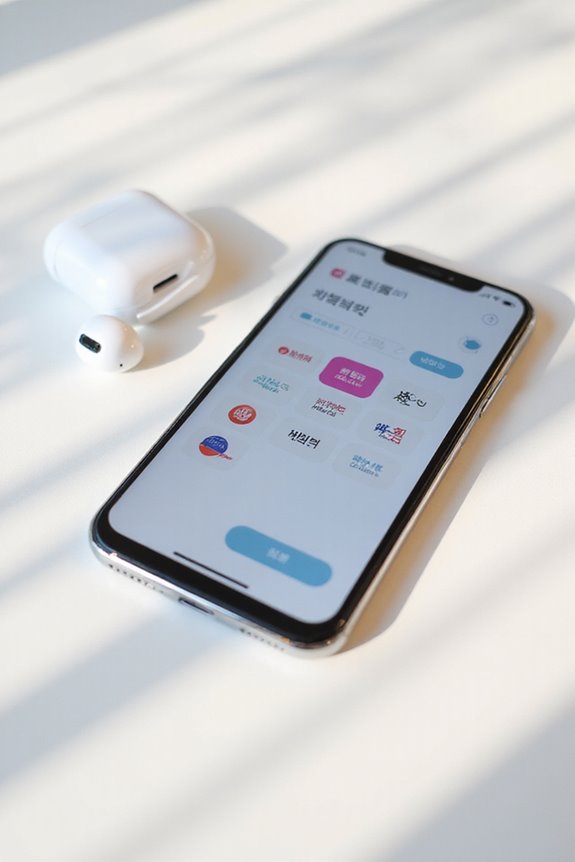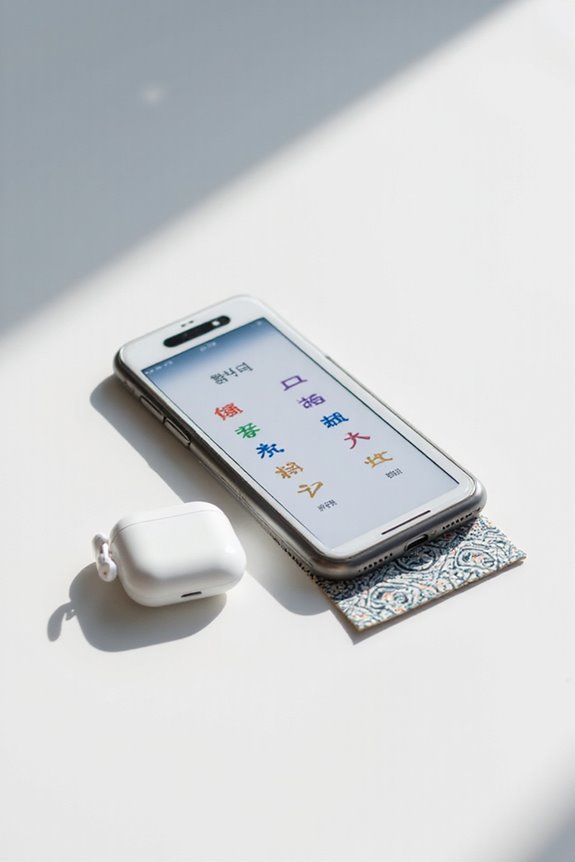When considering effective Korean language learning apps, we have several strong options. Apps like Duolingo and KoreanClass101 offer structured lessons suitable for beginners to advanced users. HelloTalk and Talkpal facilitate meaningful interactions with native speakers, enhancing practical language skills. Gamified elements and multi-modal content in apps like LingoDeer keep us engaged. However, some apps may lack depth for advanced learners and could benefit from additional real-time conversation opportunities. Exploring these features can guide our choices.
Key Takeaways
- Talkpal and HelloTalk provide direct interaction with native speakers, enhancing conversational skills through real-time exchanges.
- Duolingo offers a gamified learning experience ideal for beginners, with a free version available.
- LingoDeer effectively combines vocabulary learning with cultural insights, catering to structured learning needs.
- KoreanClass101 features an extensive library of lessons, suitable for all proficiency levels, making it a comprehensive resource.
- Consider app strengths and weaknesses, such as interaction levels and curriculum depth, to select the best fit for your learning style.
Popular Korean Language Learning Apps
When it comes to learning Korean, a variety of apps cater to different preferences and learning styles. For those seeking real conversation practice, Talkpal connects users with native speakers for video chats, while HelloTalk facilitates text, voice, and video exchanges. Beginners might prefer Duolingo’s gamified lessons or LingoDeer, which integrates vocabulary and culture effectively. KoreanClass101 stands out with its expansive library of over 3,200 lessons across all proficiency levels. Pimsleur offers audio-based learning, emphasizing oral communication through spaced repetition methods. User reviews can help guide our choices as we navigate app comparisons to identify which tools align best with our learning goals. By evaluating these apps, we can select the most effective resources for our Korean language journey.
Features Impacting Korean Learning Effectiveness
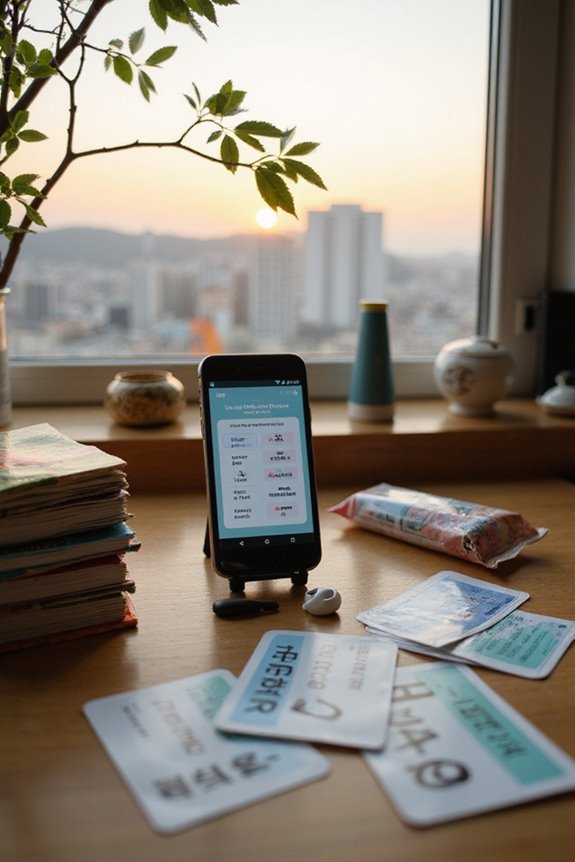
Effective Korean language learning hinges on various features that enhance the overall educational experience. A well-structured curriculum design increases comprehension and retention by ensuring a logical lesson progression. Including essential grammar topics and thematic vocabulary sets, complete with contextual examples, aids in practical usage. Additionally, integrating multi-modal content, such as text, audio, and visuals, supports different learning styles. User engagement is further amplified through gamification elements like quizzes and interactive exercises, which stimulate motivation. Immediate feedback on errors promotes corrective learning, while artificial intelligence can personalize lessons, catering to individual proficiency levels. These combined features enable flexible learning environments, ultimately improving our effectiveness in mastering the Korean language. Furthermore, robust audio resources featuring native speakers play a crucial role in enhancing pronunciation skills and overall fluency.
Pricing and Access Models
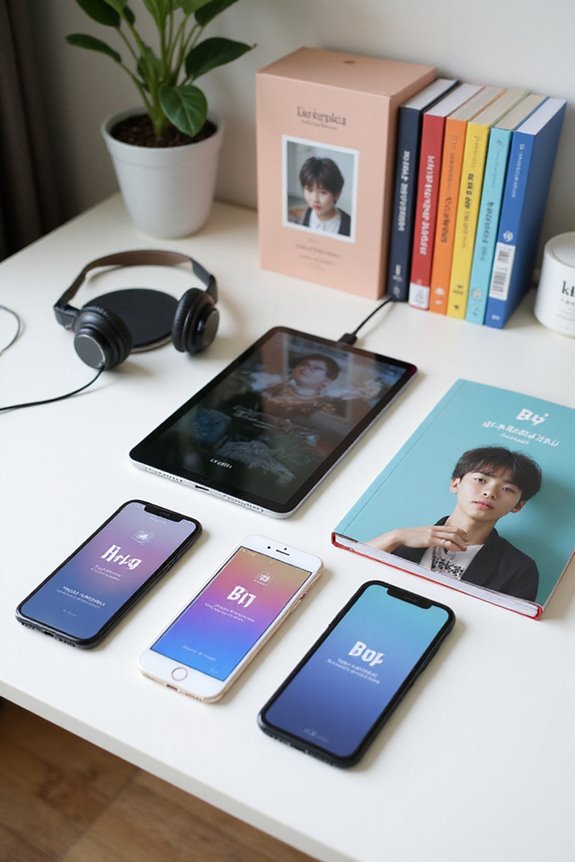
As we explore the landscape of Korean language learning apps, understanding pricing and access models becomes essential in determining which options best align with our learning goals and budgets. Many apps utilize subscription models, offering varying levels of access flexibility. For instance, Duolingo provides a free version, with a premium Super Duolingo plan at $12.99/month, allowing users to learn on both mobile and web platforms. Meanwhile, KoreanClass101 has a basic plan starting at only $4/month, giving us affordable access to extensive content. In contrast, 90 Day Korean charges $35/month for structured lessons and optional coaching. Consequently, our choice may hinge on the desired level of interaction and the overall cost-effectiveness of these offerings in relation to our learning preferences.
Learning Approaches and Pedagogical Styles
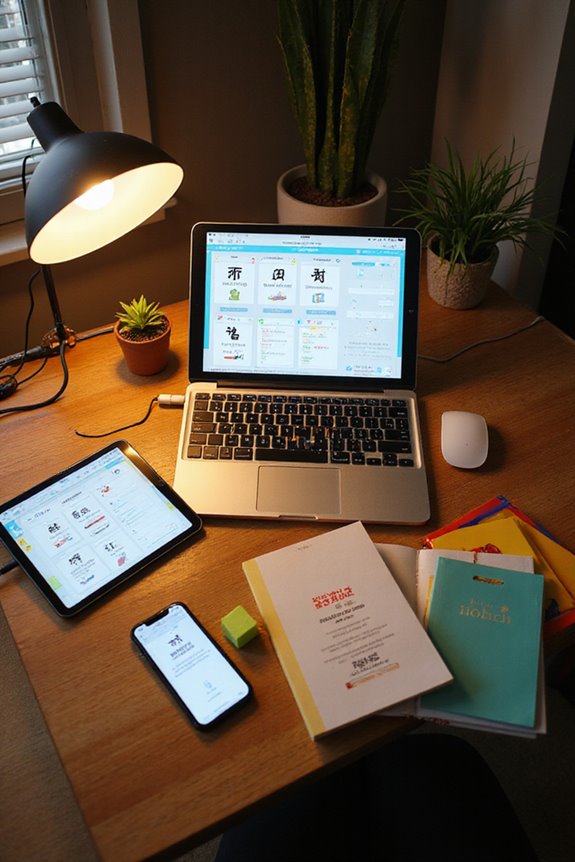
In our exploration of Korean language learning apps, various learning approaches and pedagogical styles greatly influence how effectively we absorb the language. Many apps promote sentence-based learning, emphasizing the importance of complete, meaningful sentences rather than isolated vocabulary. This method helps us grasp real-life phrases used by native speakers while introducing grammar naturally within context. Additionally, the use of interactive feedback, often provided by chatbots, allows for immediate corrections and engaging practice. These interactive elements enhance our conversational skills and keep us motivated. Moreover, incorporating native speaker exchanges offers authentic language exposure, which builds confidence and fluency. Overall, these pedagogical strategies combine to create a thorough and effective learning experience.
Skill Focus and Proficiency Outcomes
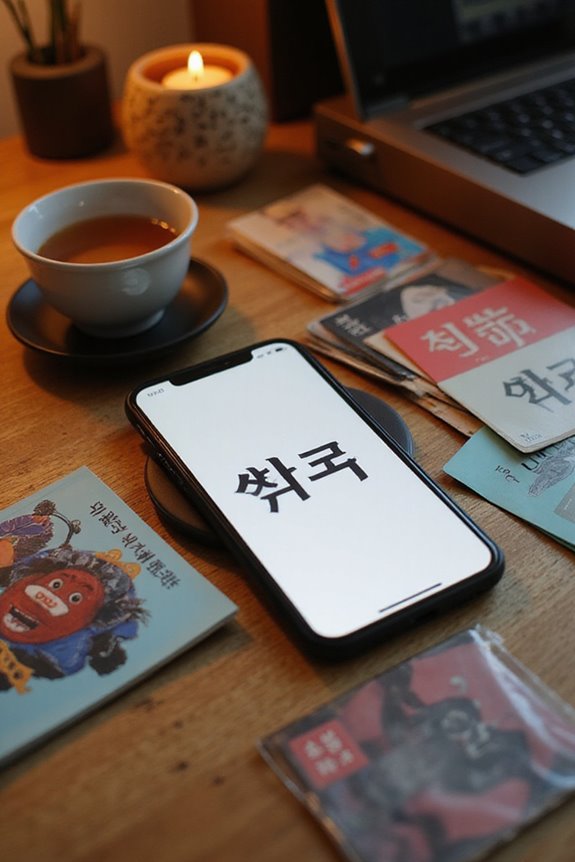
Skill focus in Korean language learning apps plays a significant role in shaping proficiency outcomes for learners. Effective apps prioritize vocabulary retention through innovative methods, like spaced repetition and contextual learning. For instance, LingoDeer engages users by embedding vocabulary in cultural contexts, enhancing retention. Speaking practice is facilitated by platforms like iTalki, which connect learners with native tutors to improve conversational fluency. Listening comprehension is bolstered through multimedia resources, such as Korean dramas and podcasts. Additionally, reading skills and grammar understanding are nurtured through progressive lesson structures, integrating vocabulary and grammatical concepts. Overall, these apps are structured to cater to various proficiency levels, ensuring that learners effectively develop their language skills across multiple competencies. Including interactive elements in the apps enhances retention and supports practical application of language skills.
Limitations and Considerations
While many Korean language learning apps offer valuable resources, it’s significant to recognize their limitations and necessary considerations. Many apps, including popular ones like Duolingo, often exhibit content gaps, primarily focusing on basic vocabulary and grammar, which may not cater to advanced learners. They typically lack depth in complex sentence structures, slang, and important linguistic features such as honorifics. Additionally, interaction barriers are prevalent, with limited real-time conversation opportunities and minimal feedback from native speakers, which are vital for language acquisition. Moreover, repetitive exercises can lead to boredom, decreasing learners’ motivation. Consequently, it’s important to approach these apps as supplementary tools while seeking additional resources for thorough language development. This guarantees a more enriching and engaging learning experience.
Frequently Asked Questions
Which App Is Best for Practicing Speaking Skills?
When choosing an app for speaking practice, let’s compare options like Teuida, focusing on interactive features, and PORO, which offers extensive conversation practice. We’ll find the best fit for our speaking skills together!
Can I Use These Apps Offline?
Absolutely, we can use these apps offline! By downloading content, we guarantee offline accessibility for vocabulary, grammar, and pronunciation practice, making our language learning journey seamless, no matter where we are.
Are There Community Features for Users?
Absolutely, there’re numerous apps fostering community engagement and user interactions. Platforms like HelloTalk and Tandem uniquely connect us with native speakers, enhancing our learning through rich, interactive environments and real-life conversations. Let’s explore them together!
How Often Should I Practice With These Apps?
To maximize our Korean learning, we should aim for daily practice sessions of 15–30 minutes. Keeping a regular practice frequency helps us retain vocabulary and improve fluency, making our learning experience much more effective.
Do These Apps Offer Grammar Explanations?
Think of grammar tips as the scaffolding supporting a building. In our app comparisons, LingoDeer shines with detailed explanations, while others like Duolingo focus more on habits, often neglecting in-depth grammar instruction.

